The small tropical island of Cabbage Key, Florida, accessible only by boat, is a beloved destination with an inn, restaurant and bar keeping it afloat
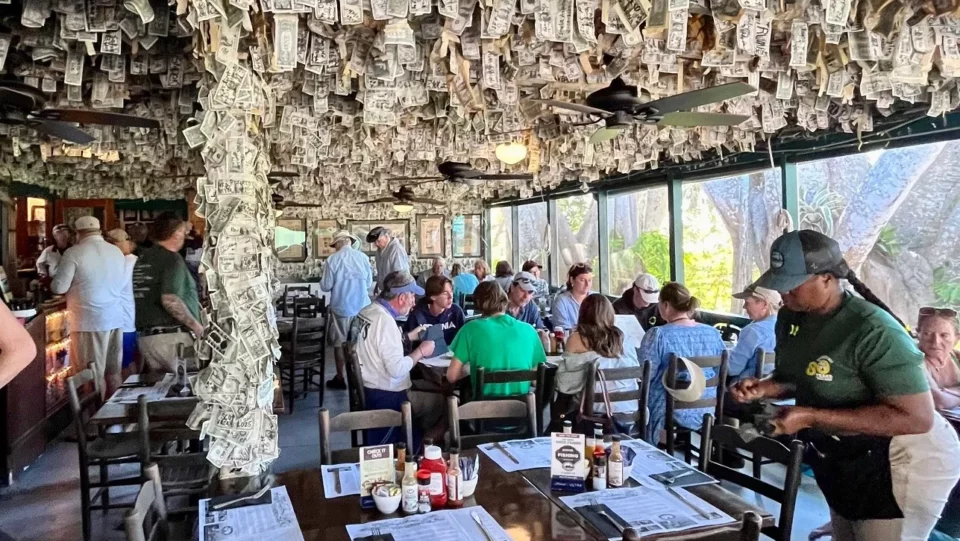
Story Summary:
- Cabbage Key is a small, 112-acre island accessible only by boat, located in Pine Island Sound near Pineland, Florida.
- The island, once home to the Calusa Indians, is now a popular destination featuring an inn, restaurant, and cottages.
- The restaurant’s “Dollar Bill Bar” is a unique attraction, with thousands of dollar bills stapled to the walls, some of which periodically fall off and are donated to charity.
- Cabbage Key is rumored to be the inspiration for Jimmy Buffett’s song “Cheeseburger in Paradise,” though the connection is anecdotal.
- The Wells family has owned and operated Cabbage Key since 1976, maintaining its “Old Florida” charm and laid-back atmosphere.
There are no cars or paved roads on the oddly shaped island 4.5 miles west of Pineland. Its 112 acres make it one of the smallest developed islands in Pine Island Sound. Accessible only by boat, it has no beach, no shelling, no nightlife.
One hundred acres of tropical vegetation (think mangroves, coastal hammocks, palm trees) occupy the bulk of the land.
Breaking up the lush and mostly untamed landscape are winding trails, a six-room inn with an unassuming, yet historic restaurant and bar, six cottages and a couple of homes.
That’s about it.
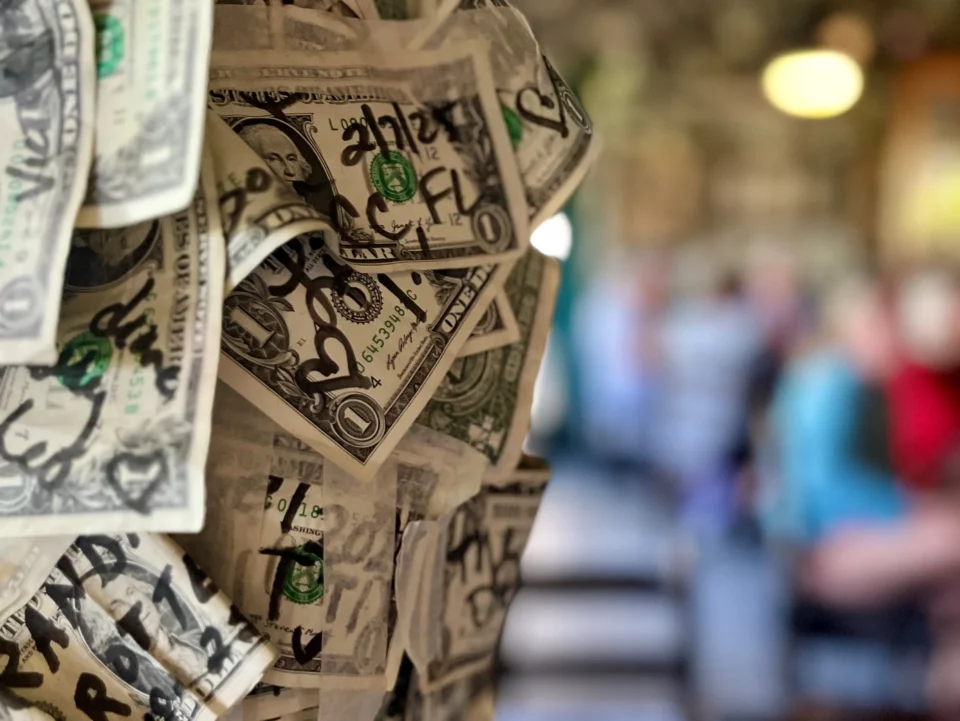
With its famous dollar bill bar, historic inn and restaurant, Cabbage Key is a small island in Pine Island Sound big on old Florida charm
So how did Cabbage Key become the beloved slice-of-old-Florida destination that it is today?
Well sit back, because Rob Wells III, whose family moved there when he was 3, is more than happy to tell you about it. After all, to him, it’s home.
“A really cool thing about Cabbage Key is the long history of it,” Wells, whose family still owns the island, said. “Because of the way our parents raised us, my brother (Ken) and I feel a sense of responsibility as its stewards. It’s up to us to maintain the island and the history for others who will come along after us. It’s a business, a lifestyle and a place we grew up. That makes it very special to us.”
While Wells admits there’s a lot of history to keep up with, he knows — and eagerly shares — much of it, often elaborating with an anecdote or two along the way.
But before we delve into the rumors of thousands of dollar bills being swept away in hurricane-force winds and the Jimmy Buffett “Cheeseburger in Paradise” connection, let’s go way back.
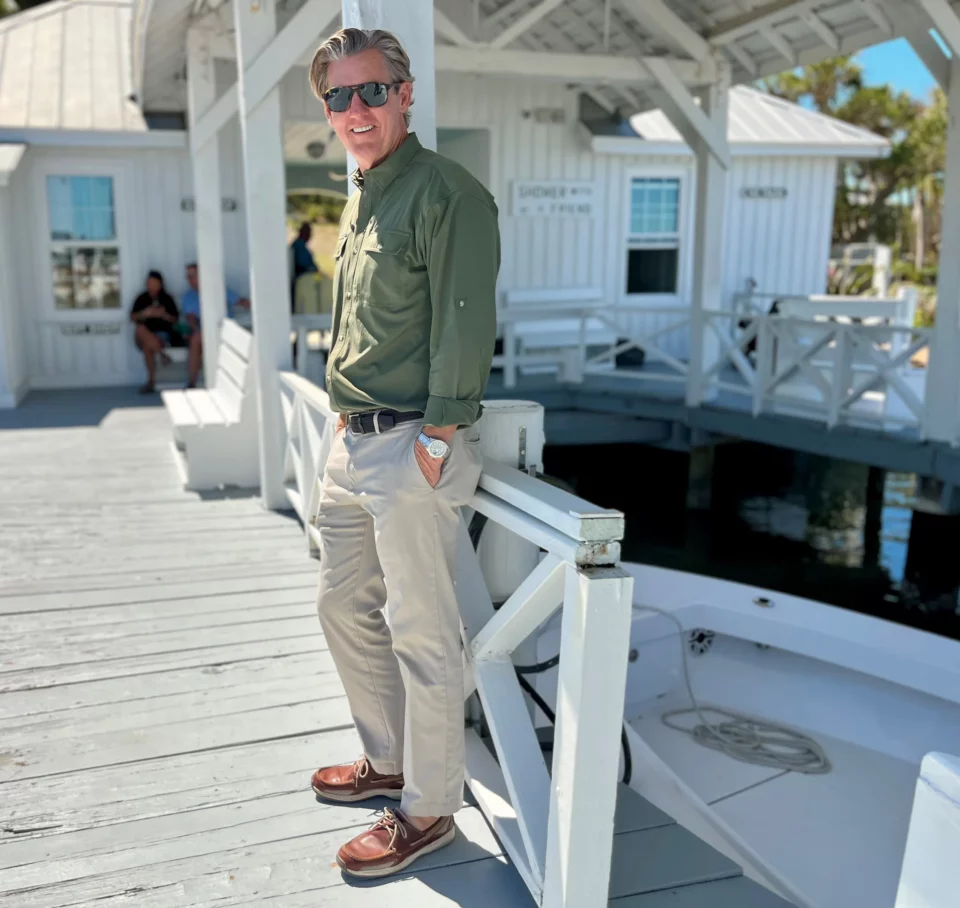
Rob Wells first came to Cabbage Key at the age of 3, when his family bought the island. Robyn George / The News-Press
The early days of Palmetto Key, Florida
Over decades, the island — an ice age sand dune — has been called Palmetto Key, Gill’s Island, Rinehart’s Island, Turner Cay and, finally, Cabbage Key. Much of its history can be found in photos and writeups on cabbagekey.com.
“We had a manager with us for a long time who was interested in history,” Wells said, referring to Mark Young, author of the book “Cabbage Key: The History of the Island.” “My brother wanted a place people could go where the history was preserved. Information was all over before that — in books, in papers. (Mark) helped put together the history page.”
It highlights five eras of the island: Calusa/Pre-Rinehart (100 B.C. to 1935 A.D.), Rinehart (1935-44), Stults (1944-69), Turner-Beck (1969-76) and Wells (1976-present).
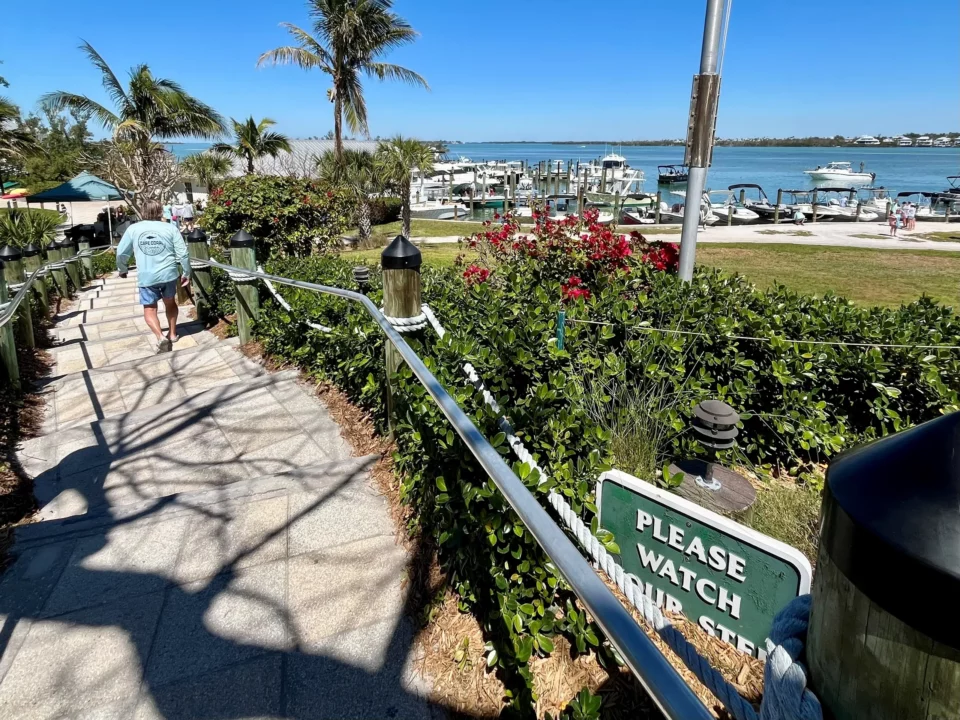
Cabbage Key’s inn and restaurant are built on a shell mound overlooking Pine Island Sound.
Robyn George / The News-Press
In a nutshell, the first two eras had the Calusa Indian occupation (they left behind a signature shell midden and some artifacts in 1570 A.D.), followed by Cuban fishing companies and their ranchos from 1750-1832, and even a land dispute caused by an erroneous survey of the island. It listed two separate islands: Palmetto Key (which didn’t exist and was sold to B.F. Hampton and James M. Graham in 1900) and Cabage Key (the actual island Charles H. Gill of Punta Gorda acquired in 1901 via the Homestead Act). The case — decided by the U.S. Supreme Court — went in Gill’s favor. After planting fruit-bearing trees and coconut palms when it first became his, Gill’s Island, as the locals then called it, saw no significant improvement for the next 25 years.
“Then Mary Roberts Rinehart came along in the 1930s,” Wells said.
The Rinehart Era

A wedding photo of Alan and Gratia Rinehart hangs in the Rinehart Cottage on Cabbage Key.
Robyn George / The News-Press
Mary — a best-selling mystery writer and war correspondent for the Saturday Evening Post — loved fishing for tarpon and vacationed on Useppa Island after President Herbert Hoover introduced her to the area.
Alan (author and executive of Farrar and Rinhart Publishing) and Gratia (heiress to the Corning Glass Works fortune), her son and daughter-in-law, purchased Palmetto Key for a reported $20,000 in 1936. Fort Myers architect Nat Walker designed their winter estate, which was ultimately finished in spring 1937.
Ninety years later, the family’s impact can still be seen on the island.
“The original Rinehart home is the inn and restaurant,” Wells said. “It’s held up remarkably well as it sits on top of a Calusa Indian mound and is protected by Cayo Costa, a state park and barrier island to the west between Cabbage Key and the Gulf of Mexico.”
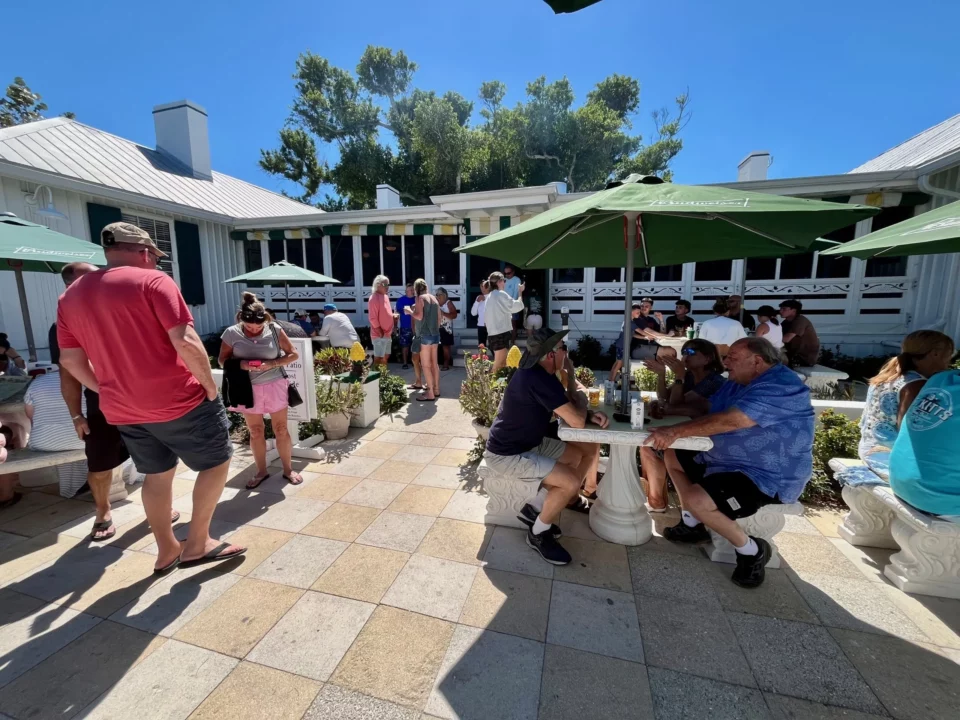
The original home of Cabbage Key owners Alan and Gratia Rinehart is now the restaurant and inn.
Robyn George / The News-Press
About 130 feet from Pine Island Sound and 33 feet above sea level, the irregular-shaped building consisted of six main bedrooms, two small staff bedrooms, a kitchen, dining room, living room and six fireplaces in its 4,500-square-foot interior, plus five porches of various sizes.
“Those six rooms in the inn really have that feeling like you’re standing in a house built in the 30s,” Wells said. “The term is overused but people come here to get off the grid. There are no phones, we added TVs but there’s no cable, just a few stations. We have the simple things you need — air conditioning, food, beverages.”
Rinehart’s Island, as it was called, also featured a boathouse with docks, a caretaker’s cottage (now the Rinehart Cottage), a playhouse for the Rineharts’ two daughters (now The Dollhouse Cottage, aka the honeymoon suite), a water tower (still defiantly standing through several hurricanes), and a power house.
The 112-acre island has lush landscape, winding trails, a six-room inn with a historic restaurant and famous bar, six cottages and a couple of homes
After the Rineharts divorced in 1938, Gratia was granted custody of the children and got ownership interest of Palmetto Key for $18,000.
That spring, a lab was constructed for $2,500 when Dr. Charles M. Breder’s U.S. Department of Fisheries expedition came to Palmetto Key to study tarpon.
“That’s now Tarpon Cottage,” Wells said. “It’s so cool how the cottages are so different. One was the tarpon facility. Another is a Sears kit house, ordered from a catalog, brought out and built. I didn’t know it at the time. A contractor told me. We still rent it today. It’s the Cabbage Patch Cottage.”
Gratia’s death from breast cancer in 1939 at the age of 34 closed Palmetto Key save for Breder, who would leave in 1942 because of World War II, and caretakers/guards who looked after the property.
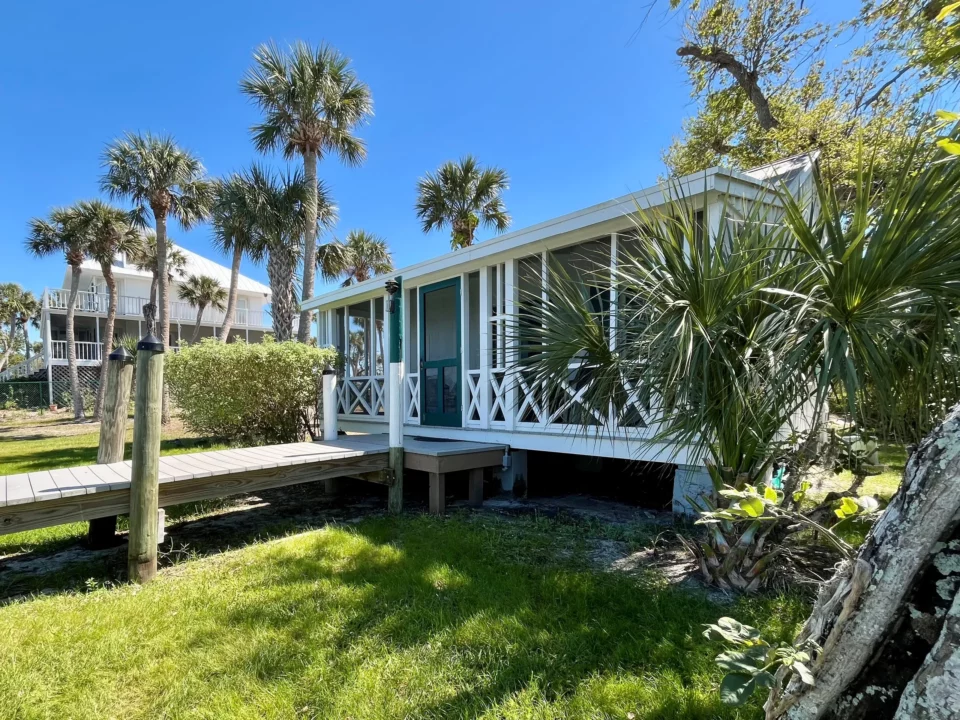
Cabbage Key’s Dollhouse Cottage is pictured with the Wells family residence in the background.
Robyn George / The News-Press
The Stults Era
Larry Stults, who owned an advertising agency in Chicago, was recovering from an illness when he and his wife Jan bought Palmetto Key for $25,000 in 1944.
“That’s when it began operating as a resort,” Wells said. “It was a hideaway retreat. That was their vision, to build a getaway destination.”
The Inn and Studio on Cabbage Key was open to select guests — references were needed if the Stults didn’t know you — who arrived by boat or seaplane via Gulf Airways out of Fort Myers. They relaxed, read, boated to nearby islands and even took an art lesson or two from Larry himself. His self-portrait still hangs in the bar today.
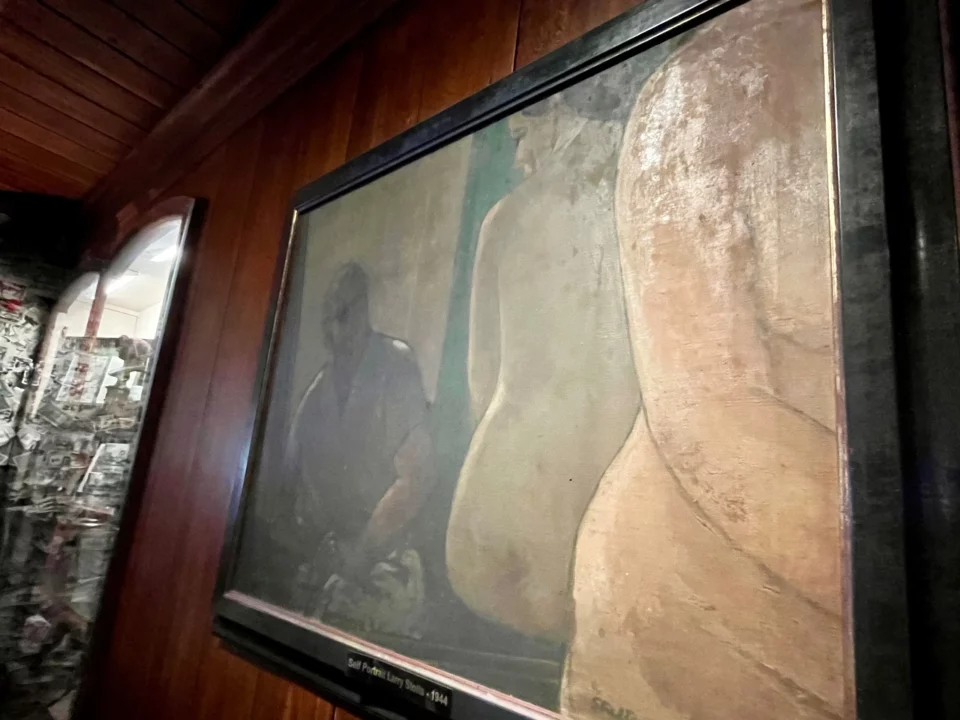
Former Cabbage Key owner Larry Stults’ self portrait from 1944 still hangs in the bar area.
Robyn George / The News-Press
“They had a restaurant there I think,” Wells said. “But there was no bar. Guests could grab drinks in the library. It was very informal.”
Rates ranged from $15 to $20 per person/per day in the winter and $12.50 to $14 in the summer.
“It was just after the war,” Wells said. “They had a Jeep equipped with a ship-to-shore radio. It was essentially the only means of communication to the outside world. There was a communications law that you could only have an antenna on moving equipment. The Stults’ (three children) told us all kinds of interesting things. They grew up on the island too and shared stories with us. It’s a unique connection.”
After 25 years, the Stults were in their 60s and decided to sell in the late 1960s.
Turner-Beck Era
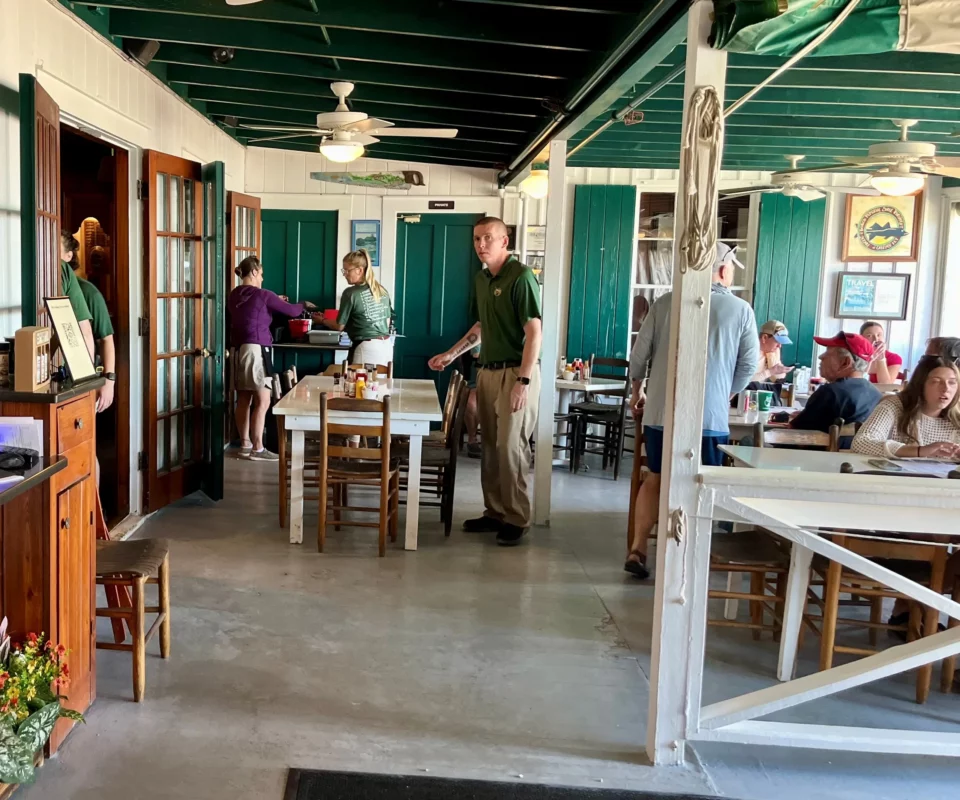
Lunch is served on the front porch at Cabbage Key.
Robyn George / The News-Press
Jimmy Turner already owned Useppa when he bought Cabbage Key for $160,000 in 1969. He turned the management of the adults-only inn on Useppa over to Jo Ann and Bob Beck and headed to Cabbage Key.
“The Becks ran (Useppa) like they owned it,” Wells said. “So people assumed they were the owners. The Becks wanted to purchase Cabbage Key and Jimmy wanted to sell it to them. But they didn’t have enough money to buy it, so they had a lawyer subdivide it. They bought it from Turner and individuals bought parcels from them. That’s how it got divided from one large island into parcels.”
For $225,000, the Becks became the owners in 1971 and — here’s the best part — Turner sold and transferred Useppa’s liquor license to them for $10.
And just like that, the bar was opened.
The famous bar at Cabbage Key, Florida

According to Cabbage Key co-owner Rob Wells, about $20,000 fall of the walls annually due to weather and humidity. Robyn George / The News-Pre
Take one step inside the bar (the former library in the Rinehart home) and you’ll instantly know why it’s known far and wide as the Dollar Bill Bar.
They’re everywhere. The bar area looks as though it was decorated in dollar-bill patterned wallpaper, while the back porch is buried from floor to ceiling in them. Spend five minutes there in season and you’ll see guests snapping selfies against the backdrop of bills. Spend an hour and you see another one or two more being taped up.
How did it all begin you wonder?
“It may have been a symbolic first dollar,” Wells said. “But what I heard was it got started when $1 bought lot more than it does today. Someone put their name on one and put it up when they had a couple of dollars. They might not have one when they came back so they could use the one on the wall. It was almost a form of banking. But it could have been another reason.”
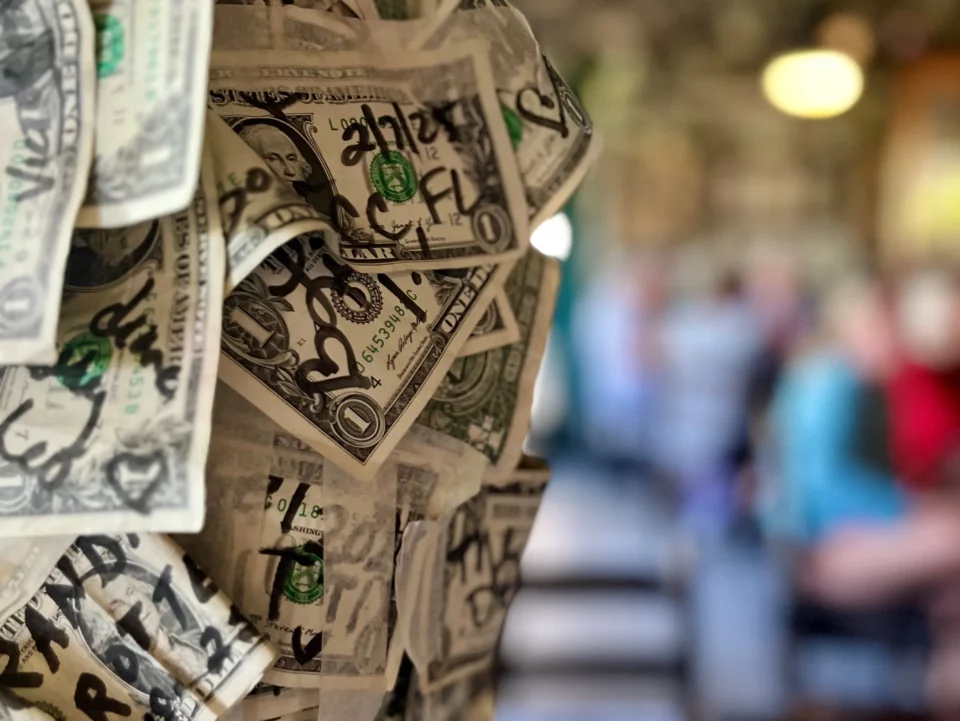
The tradition of signing and taping a dollar bill to the wall began as soon as Cabbage Key’s bar opened in the early 1970s.
Robyn George / The News-Press
Regardless, it caught on.
“There’s $65,000 to $70,000 on the wall at any given time,” Wells said. “Customers come back and see if they can find their dollar. Someone said he hid one when his kid was an infant, and he found it 15 years later.”
The majority, however, don’t stay up nearly that long.
“It’s inaccurate to say we take them down and give it to a charity,” Wells said. “Because of the humidity, we end up with about $20,000 a year falling off the wall. The staff picks them up, takes the tape off. We stock them up and then donate it to a charity.”
AMIkids on Fort Myers Beach, MDA, Community Cooperative Food Kitchen, United Way, Beacon of Hope and the charitable component of the Bobby Holloway Fishing Tournament are just some of the worthy recipients.

Rob Wells, left, and his brother Ken Wells grew up on Cabbage Key.
Robyn George / The News-Press
“It’s great because we have customers from out of town giving to a local charity,” Wells said.
And no, thousands of dollars didn’t blow away during hurricanes.
“There are a lot of fun, but not true stories,” Wells said. “After (Hurricane) Ian, it looked like nothing happened inside the restaurant. We put down the shutters. The property had the good fortune of the worst winds coming out of the west. It’s sheltered by tree growth. If it was facing a different way, we probably would have had more wind damage.”
Star-studded visitors on Cabbage Key, Florida
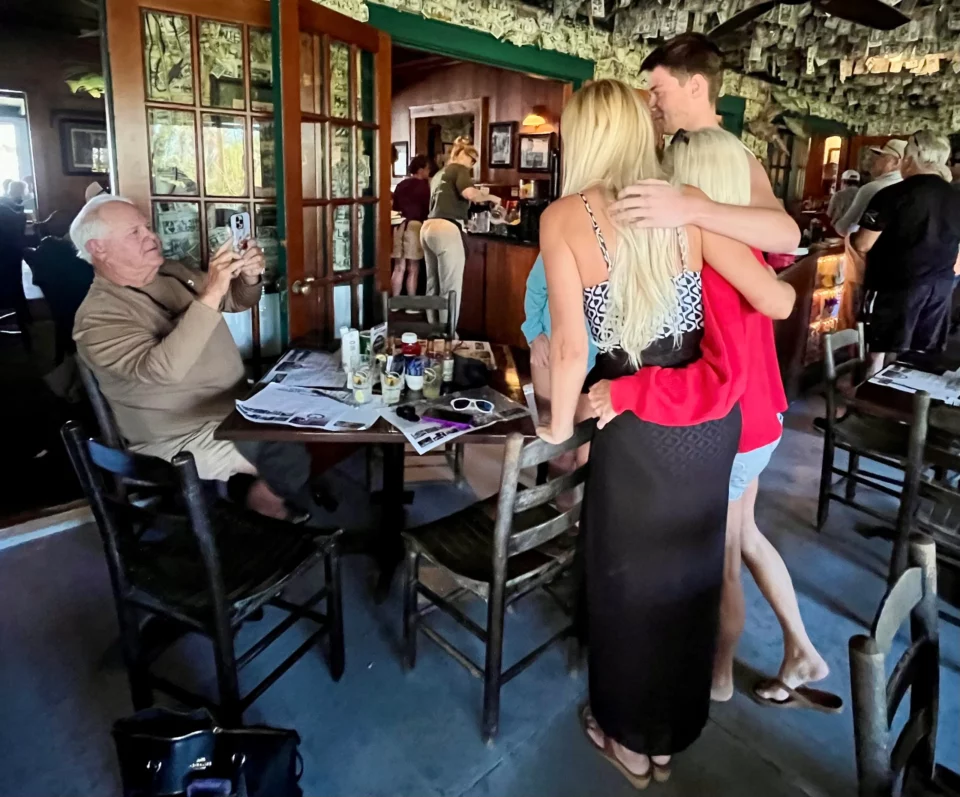
Guests take photos with a backdrop of dollar bills in Cabbage Key’s restaurant and bar.
Robyn George / The News-Press
Word of this friendly old Florida bar quickly spread, bringing it from a local boaters and tourist stop in the 1970s to the iconic destination it is today.
Celebrities who’ve dropped by, according to Cabbage Key’s website, include Ernest Hemingway, Katharine Hepburn, Ted Koppel, Jimmy Buffett (more on him later), Ed McMahon, Rob Lowe and Julia Roberts.
“We’ve been lucky to have some great guests, some more famous than others,” Wells, careful not to name names, said. “When they come in for lunch, they’re mingling right there with guests. They’re enjoying the day in shorts, flip-flops and fishing shirts, fitting right in. More often than not, they’re buying a round of drinks or wanting to buy 60 (of the bar’s signature) Cabbage Creepers.”
The Wells Era

Cabbage Key co-owner Rob Wells ties off his boat on a recent trip from Pine Island.
Robyn George / The News-Press
In 1976, the Becks sold Cabbage Key to Rob’s parents — Robert (director of admissions at High Point College in North Carolina) and Phyllis (an elementary school teacher).
“I was 3,” Wells said. “I remember my grandparents thought my parents were crazy, going to an island that didn’t have a phone or land power, just generators. I vaguely remember being on a pontoon boat with a tank on it for diesel that ran the generators. And I remember living in the restaurant for a while while the Becks were showing us the whole operation before they departed.”
The Wells moved into the owners’ house, which was the old staff house that “burned down in the late 80s, early 90s.” They built a home of their own, just down from the inn and Dollhouse Cottage that Robert and Phylis lived in full time up until Robert’s death a year ago.
“I also remember a lot of meals with employees,” he said. “We all ate as a family. We had a much smaller staff than now and there weren’t many commuters. Most lived on the island. Everybody got to know each other. We spent a lot of time in the restaurant.”
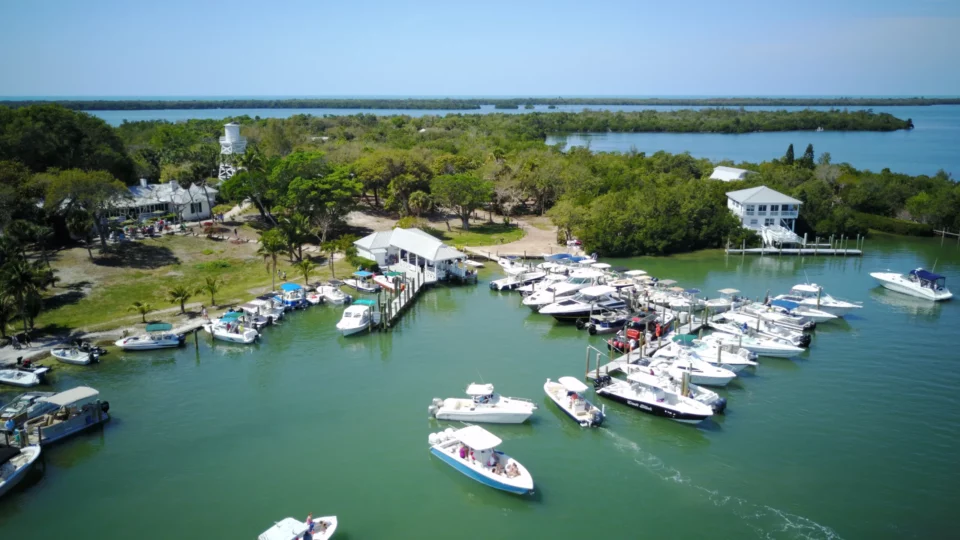
At 112 acres, Cabbage Key is one of the smallest developed islands in Pine Island Sound.
Provided by Cabbage Key
In season, about 40 staff members boat back and forth while another 30 live on the island.
“We have about 80 employees in peak season,” Wells said. “Back then my parents worked most aspects of the business. Mom waited on tables and dad, who knew how to cook, taught himself the original recipes passed down from the prior owners, including the frozen Key lime pie.
“When the weather was nice, my brother and I would be out on the grounds doing whatever needed assistance if we weren’t working in the restaurant.”
When the Wells came in, some of the island’s parcels were still owned by others from the Beck era.
“My dad was friendly with everyone,” Wells said. “When they decided to move, they sold their homes to us, and we rent them as cottages.”
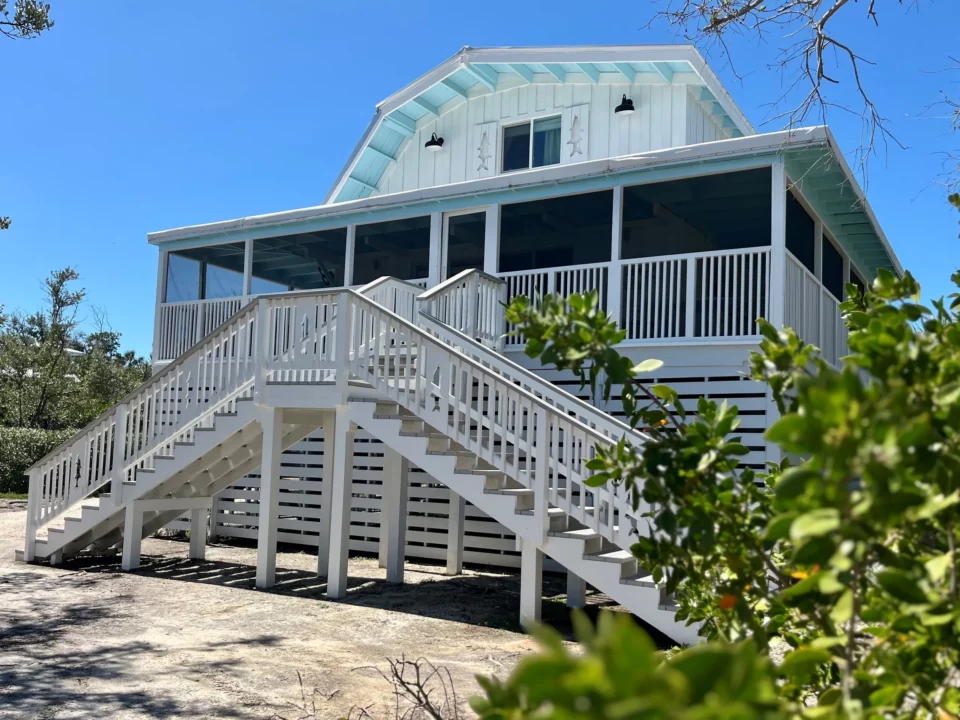
The Snook Cottage is one of these. The two-story stilt home was built in 1973 and was known as the Green Barn for more than a decade.
Harborview, another two-story stilt cottage, is another.
“It’s one of my favorites,” Wells said. “It’s one of the biggest and you’re right over the water and dock when sitting in the house.”
Growing up on Cabbage Key, Florida
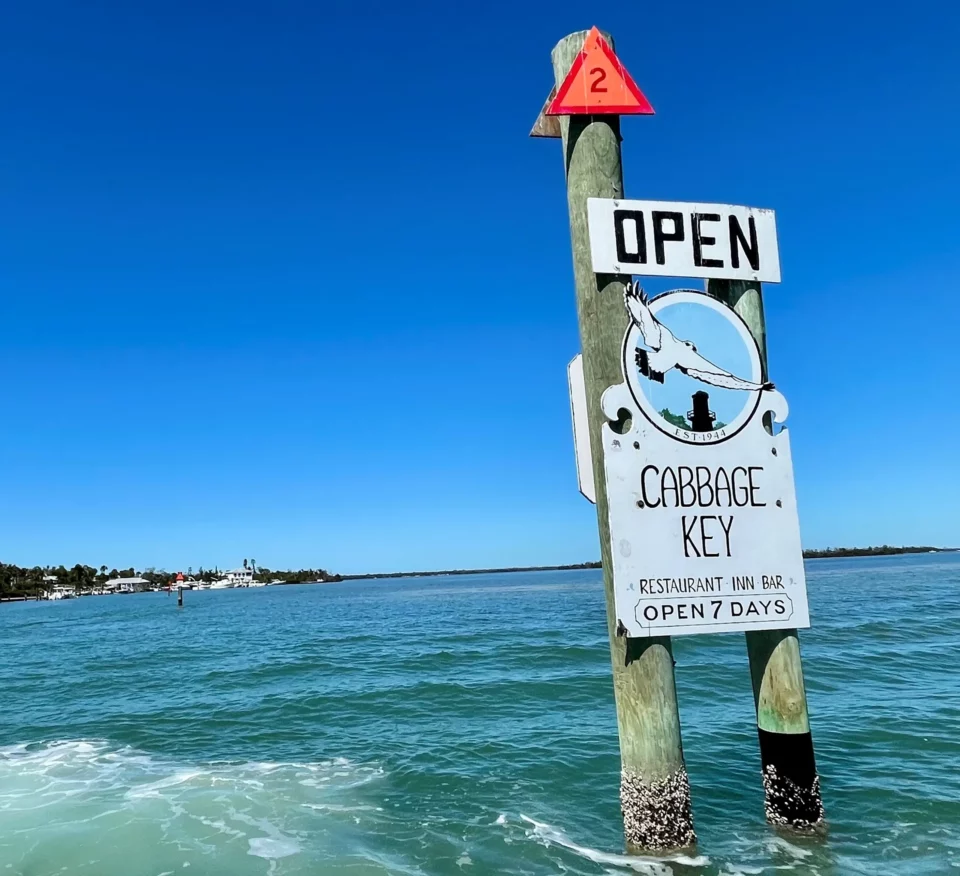
Cabbage Key welcomes boaters and guests seven days a week, 365 days a year.
Robyn George / The News-Press
Structurally, Cabbage Key is pretty much the same as it was when the Wells first arrived.
“A few homes were added including my parents’ primary residence, the Point home and the two on the back side of the island,” he said.
One of the biggest changes to the island came when Useppa was building enough homes to demand underground cables for electricity in 1981.
“We benefitted from that,” Wells said. “The single biggest change came when we finally had reliable power and didn’t have to rely on generators that never seemed to want to run right.”
Another turning point in Wells’ life came when he was a teenager.
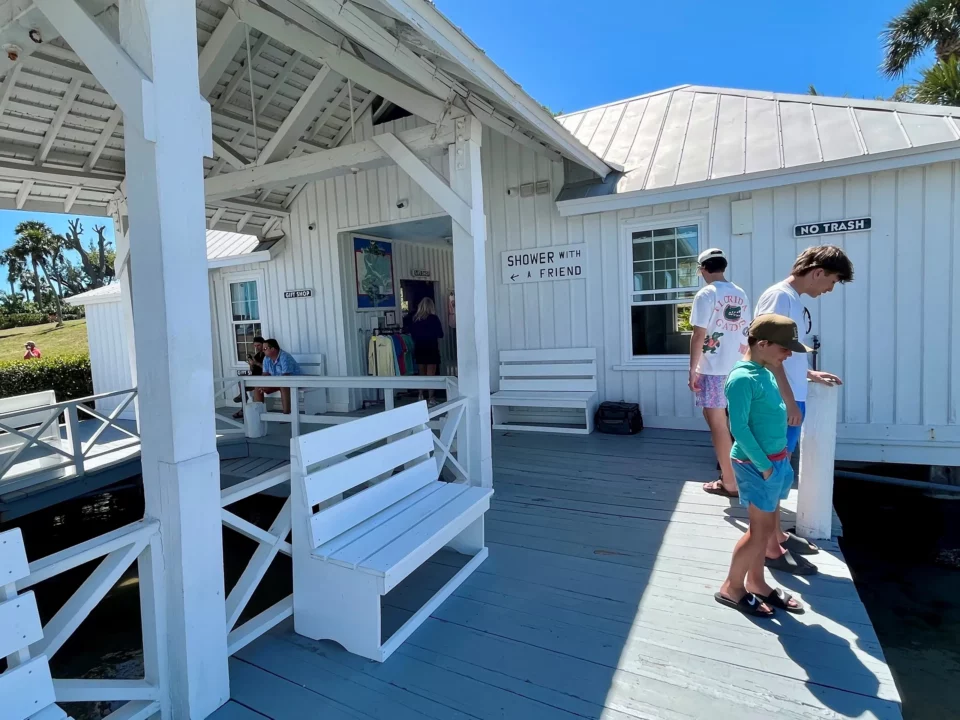
Cabbage Key’s original boathouse dates back to the 1930s.
Robyn George / The News-Press
“I always rode the staff boat to get to elementary and middle school,” he said. “When I was in seventh grade my parents finally bought a house in Fort Myers. Mom said she’d had enough with figuring out after-school activities. We needed a base on the mainland.”
More than a decade later in 1999, the Wells family purchased the Tarpon Lodge on Pineland. Built in 1926, it was a fishing lodge, a retreat and school for evangelical clergy, and a drug and alcohol rehabilitation center called The Cloisters.
“It had been unoccupied for years when we bought it,” Wells said. “My mom and dad, being in the historic restaurant and lodge business, saw it as a great opportunity.”
Nowadays Wells works more out of Tarpon Lodge, while Ken spends much of his time on the island.
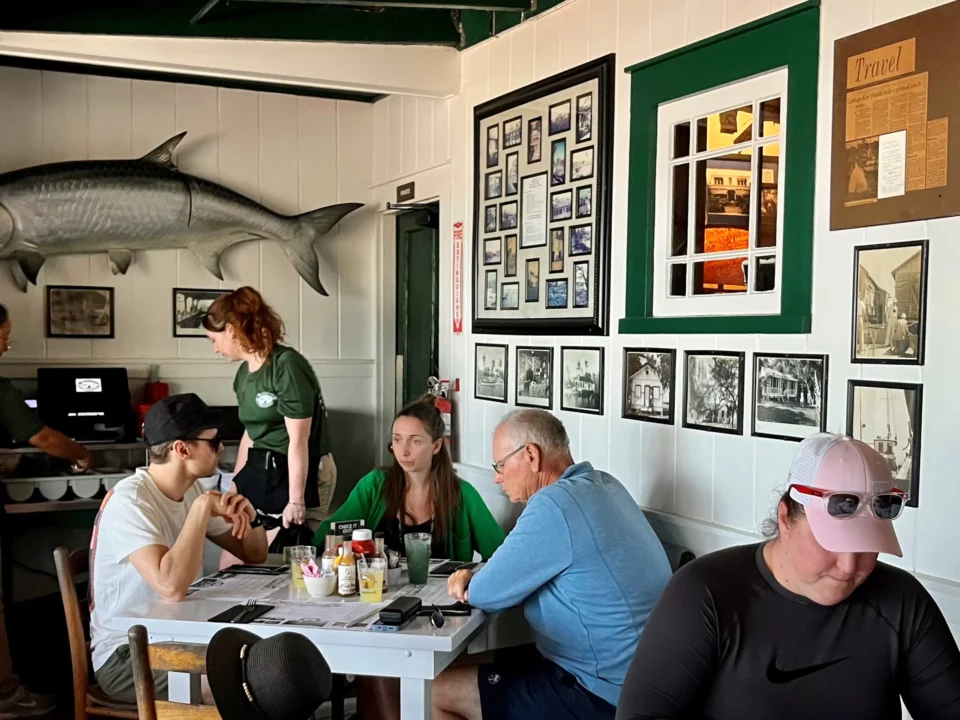
The history of Cabbage Key can be found in photos and articles on the restaurant’s walls.
Robyn George / The News-Press
“We cross-cover both though,” Wells said. “We talk 10 times a day and know what’s going on at each one.”
Visiting Cabbage Key today
Most people come to Cabbage Key to grab lunch — think cocktails, seafood-heavy appetizers and salads, plus grilled handhelds and more seafood dishes.
Love Boat ice cream and gourmet coffee are recent additions, while the homemade frozen Key lime pie is an old favorite.
“I remember making it as a kid,” Wells said. “I stood there and whipped it and whipped it. In like minute 42 of 43 it would finally be ready.”

Visitors can walk the trails and climb to the top of the water tower on Cabbage Key.
Robyn George / The News-Press
Visitors also come to soak in the views from atop the water tower and explore the winding trails where you may come across raccoons, tons of birds, non-poisonous snakes and gopher tortoises.
“My dad said they were turning the island into Swiss cheese,” Wells said.
Those who want to stay longer than a day are welcome to.
“A lot of people don’t realize we have guest accommodations,” Wells said. “Regulars have been coming for years and say they didn’t know. It feels much different if you stay there. You see the first light in the morning and the sunset in the evening. It seems like your own island shared with a limited number of guests and employees.”
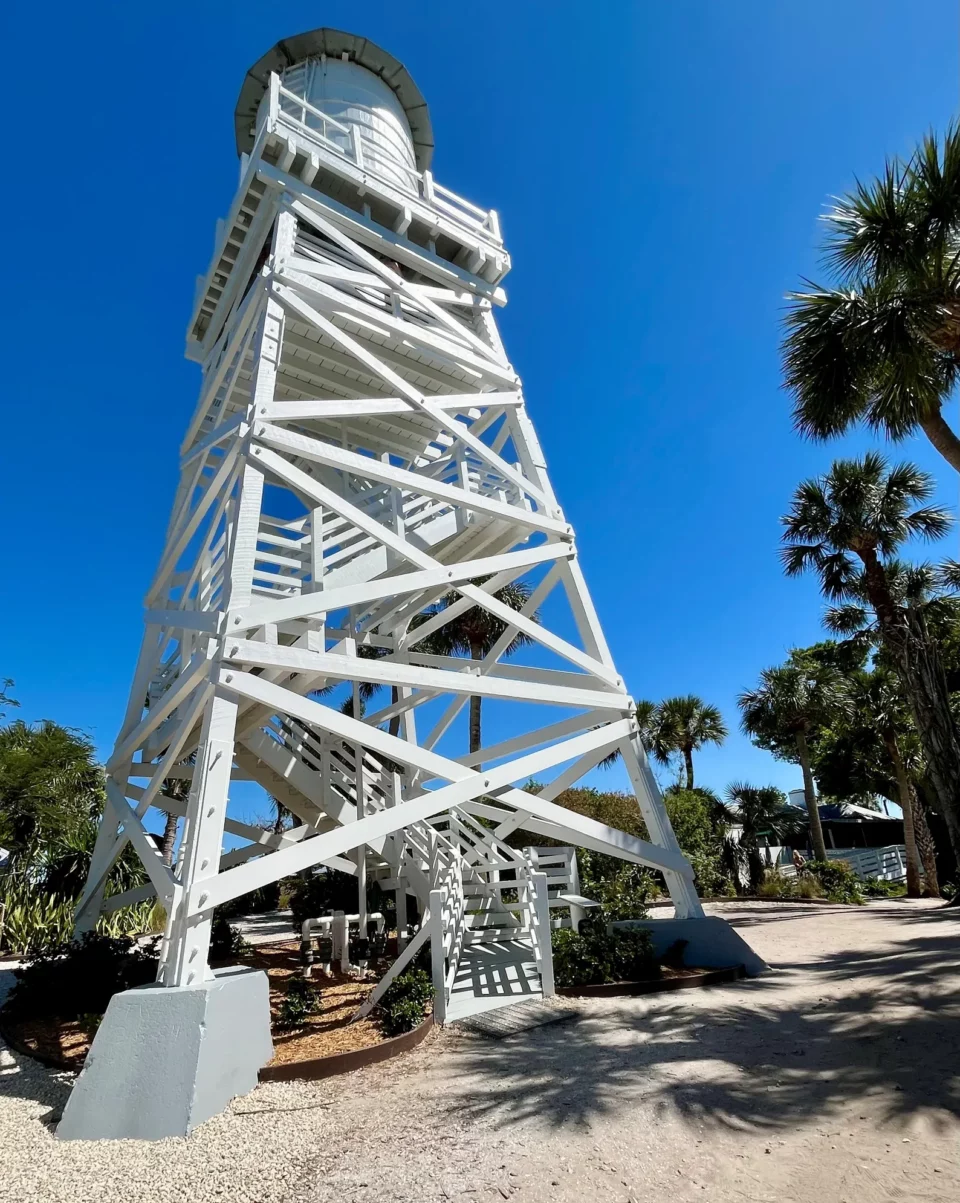
Cabbage Key’s water tower, which dates back to the 1930s, has made it through several hurricanes.
Robyn George / The News-Press
Those who do stay — in the six-room inn or one of six cottages — are there for two or three days on average.
“Longer if they have boats,” Wells added. “They island hop. You can easily get to Cayo Costa, which I think is the gem of this area. It’s our neighborhood beach and you can kayak over. It’s a neat experience.”
While lunchtime is the busiest, breakfast and dinner also are available.
“Dinner is much more elevated than lunch,” Wells said. “Instead of serving hundreds (for lunch), it’s a much smaller group. It’s a limited menu but it’s elevated. There’s a fish of the day special and the steak is a good seller as well. The burger is on the lunch and dinner menu.”
Speaking of that burger …
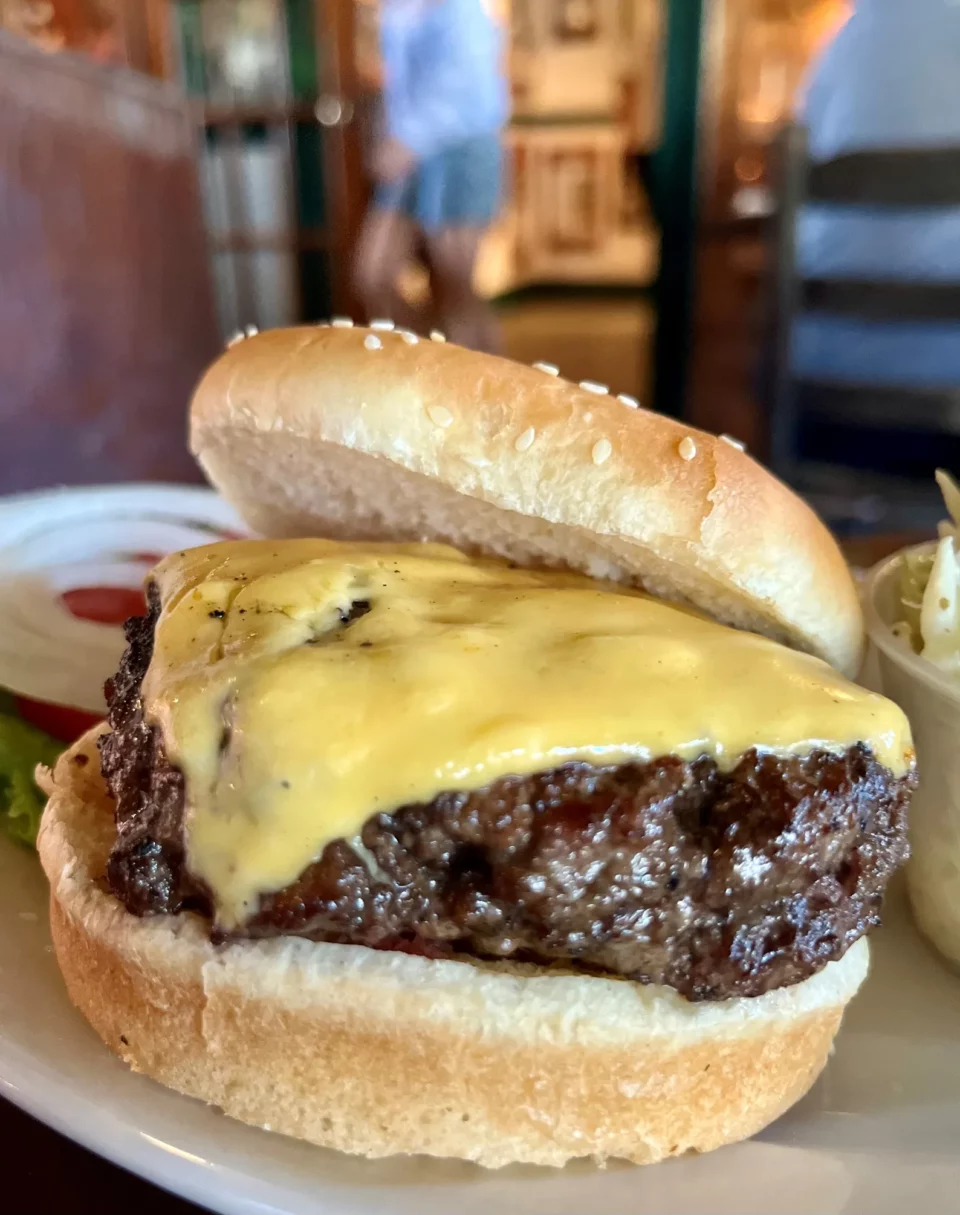
Cabbage Key’s famous cheeseburger is a best-seller.
Robyn George / The News-Press
Cabbage Key’s wildly popular 100-percent fresh Angus cheeseburgers sell to the tune of about 600 a day during season.
The famous char-grilled wonders are rumored to be the inspiration of Jimmy Buffett’s song “Cheeseburger in Paradise.”
But is it true?
Wells was ready to field that question.
“His sister used to live on Boca Grande, and he would come in on a seaplane,” Wells said. “I vaguely remember that. He would come to the bar and got to know everyone here.
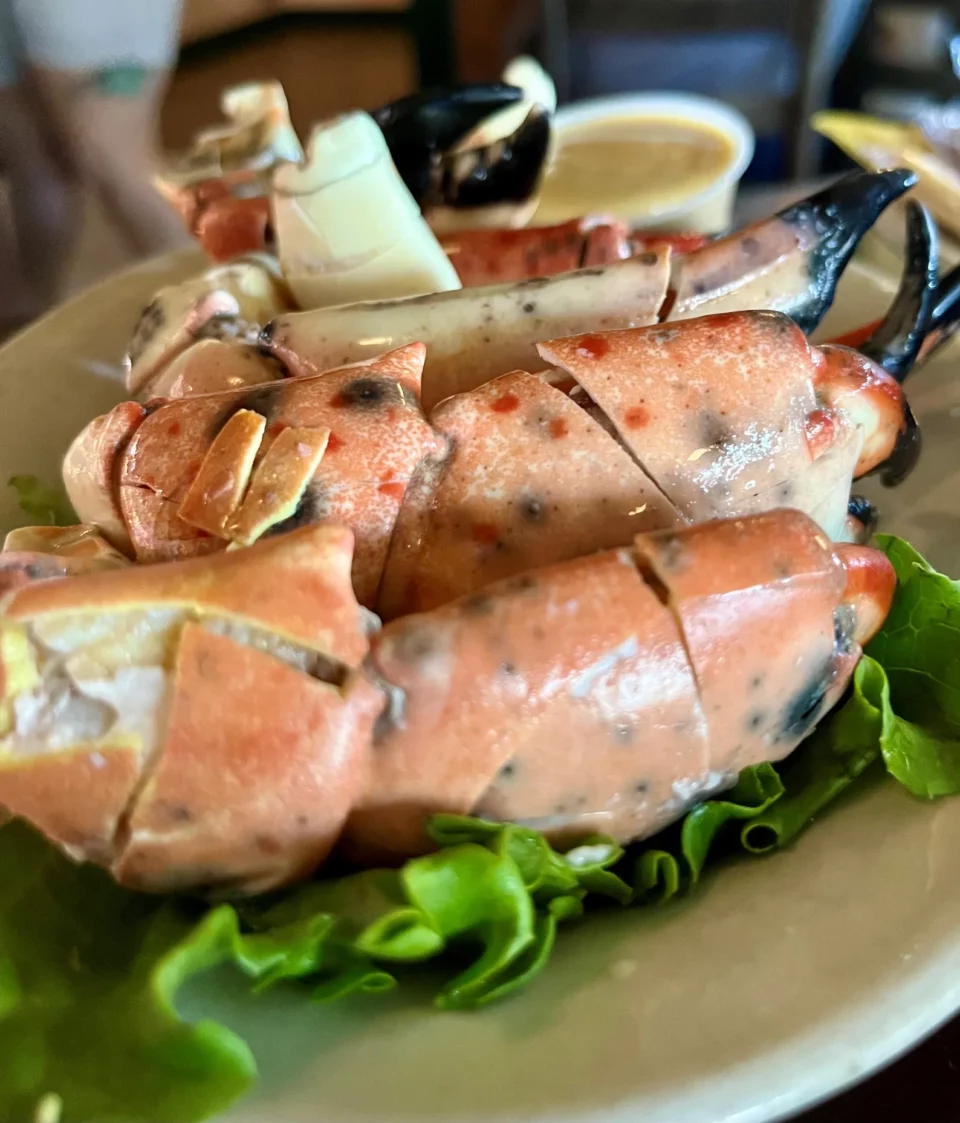
When in season, stone crab claws are on the menu at Cabbage Key.
Robyn George / The News-Press
“He was going to do a concert at the Lee County (Civic) Center and invited my parents and the staff. My parents didn’t go since they never closed. But they wanted as many staff members to go that could. They said when he saw the staff there in the crowd, he recognized them, pointed and immediately started playing ‘Cheeseburger in Paradise.’ That’s how the legend grew.
“If we’re just a small part of a bigger story, it’s a fun story to be part of. It’s nice to acknowledge he spent time here, and if we’re one of the places that inspired him, we’re honored.”
And the rumor that his mom kicked Jimmy out for not wearing shoes?
“I asked her,” Wells said. “Mom’s going to be 80 in May. I asked if she did that and she said, ‘No.’
“Her interaction with him was he needed to use the phone but didn’t know how to use our ship-to-shore phone. She said, ‘I’ll show you,’ and took him back to where it was. When she came out, the employees were going nuts. They told her he was famous, but she didn’t pick up on who he was. That’s a story she still remembers like it was yesterday.”
Old Florida at its finest
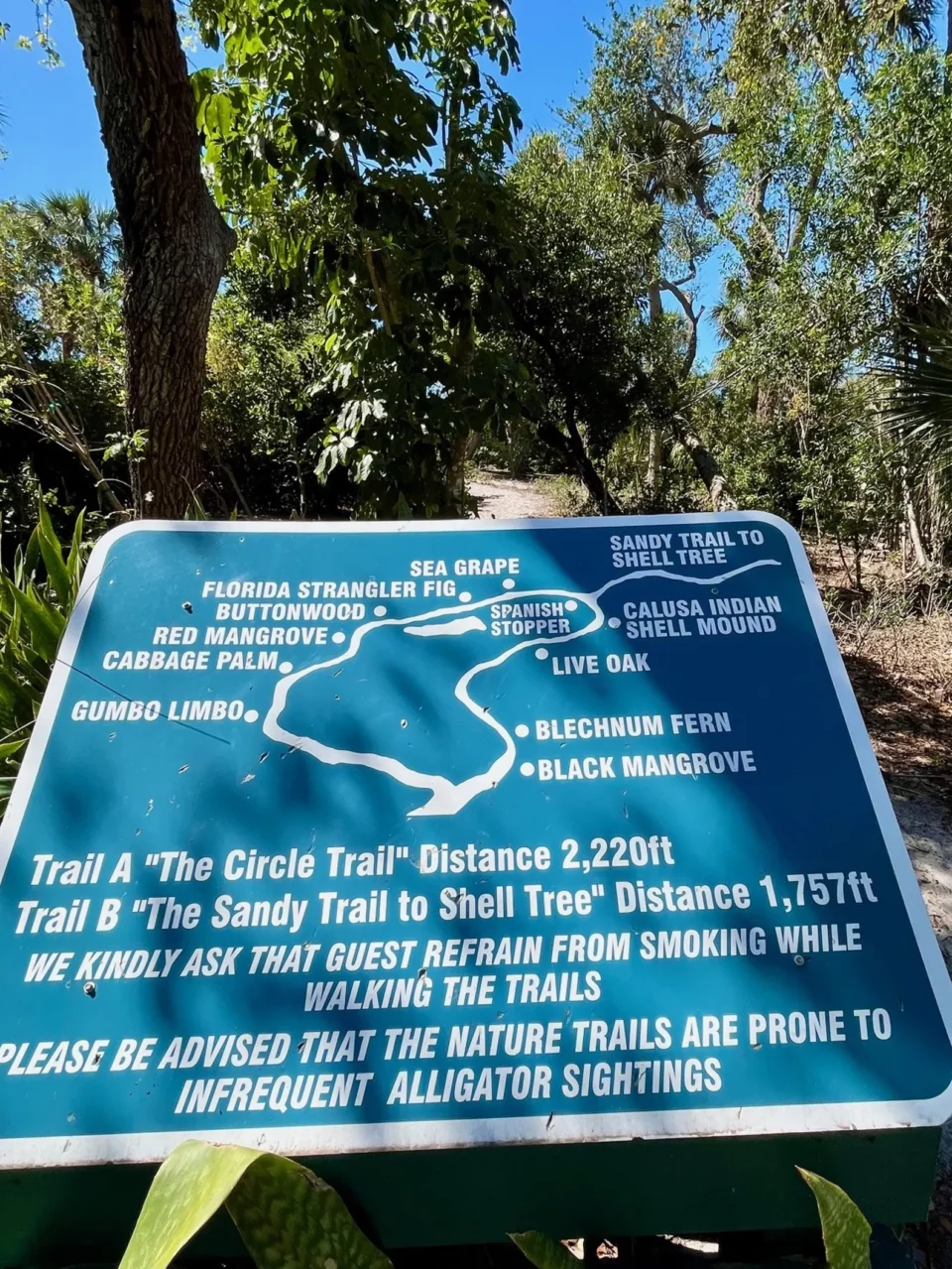
Visitors are invited to walk the trails on Cabbage Key.
Robyn George / The News-Press
The vast majority of Cabbage Key remains an untouched, tropical Florida paradise.
“Hopefully it takes guests back in time,” Wells said. “It’s the opposite of a full-service resort. People go there — and I think it’s an overused term — but they go to get off the grid. To take a break from everyday living and be present. It’s not a tremendously long way away from civilization and you don’t have to fly to the end of Earth to get here. We often say it’s camping out for adults.”
It’s open seven days a week, 365 days a year “because we’re not smart enough to close.”
“My brother and I joke around a lot about growing up here,” Wells said. “They say you don’t appreciate what you have until you don’t have it. I felt three different ways about it. When I was in elementary school, my friends would come out to build forts, fish all day and night. It seemed like this amazing place.
“Then as a teenager, I wanted to do things in town with my friends. Boats were like bikes for us. We were the only kids on the island. To see friends, I’d have to boat to South Seas.
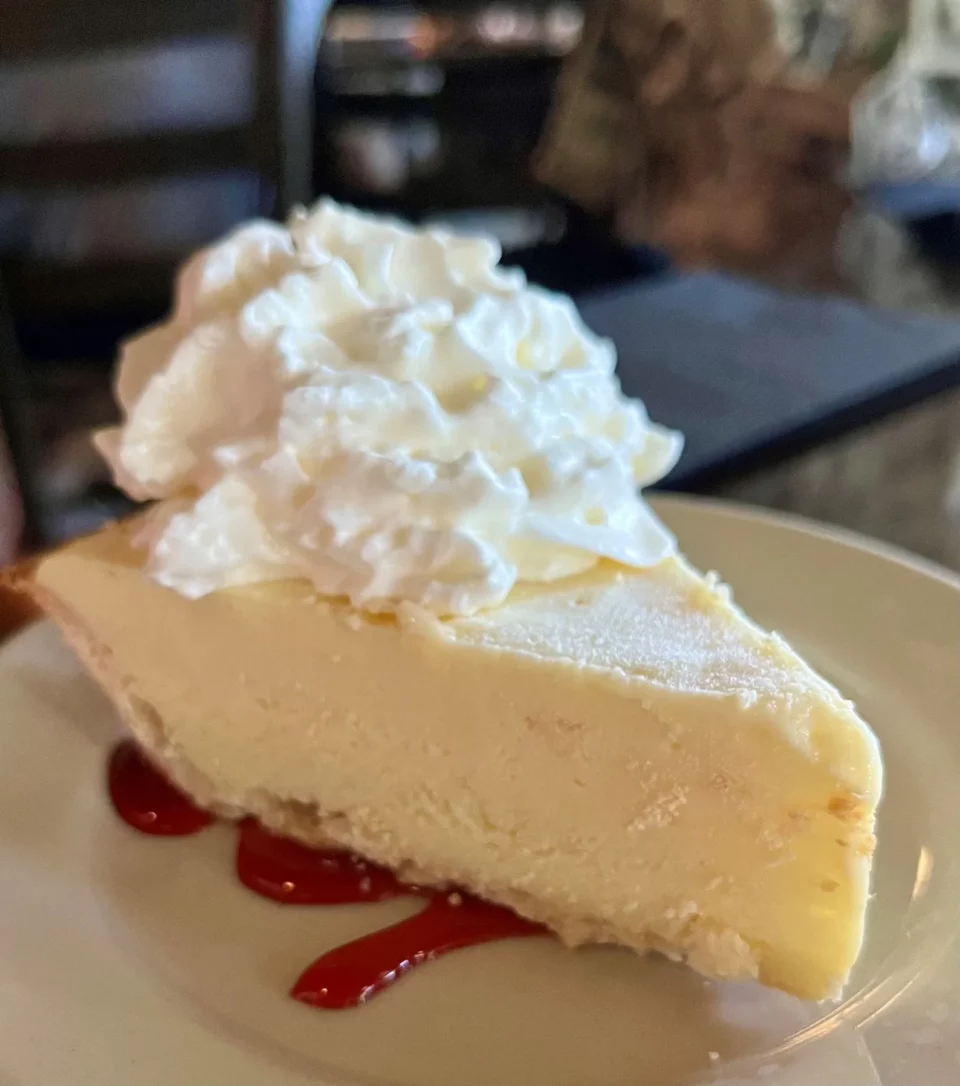
Cabbage Key’s beloved homemade Key lime pie is served frozen.
Robyn George / The News-Press
“Then when I got to (the University of Florida), people said it sounds so cool to grow up in a place with burgers and beer.”
Just watching Rob and Ken greet and interact with guests and staff on the island today, tells you all you need to know. The gregarious duo exude an effortless and breezy charisma that’s a natural reflection of the island itself.
They’re the perfect stewards for this slice of paradise known as Cabbage Key.
How to get to Cabbage Key, Florida
Cabbage Key, accessible only by boat, is located at Channel Marker 60 in Pine Island Sound, 4.5 miles west of Pineland. If you don’t have a boat, there are serval ways to visit. According to Cabbage Keys’ website, the following options are available:
- Captiva Cruises: Departs from Captiva. Go to captivacruises.com or call (239) 472-5300 to reserve.
- Island Girl Charters: Leaves from Pineland. Go to northcaptivaislandgirl.com or call (239) 633-8142
- Tropic Star Cruises: Departs from Pineland. Log on to tropicstaradventures.com or call (239) 283-0015
- Boats and Fun: From North Captiva. boatsandfun.com or call (800) 991-3259
- Private charters: A list of captains can be found at cabbagekey.com
This article by Robyn George, a food and dining reporter for The News-Press, was originally published on eu.newspress.com. Connect with Robyn at rhgeorge@fortmyer.gannett.com

